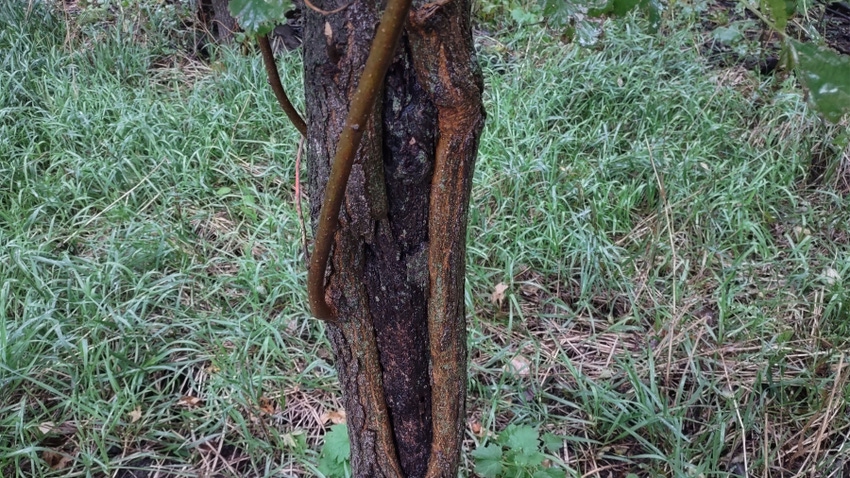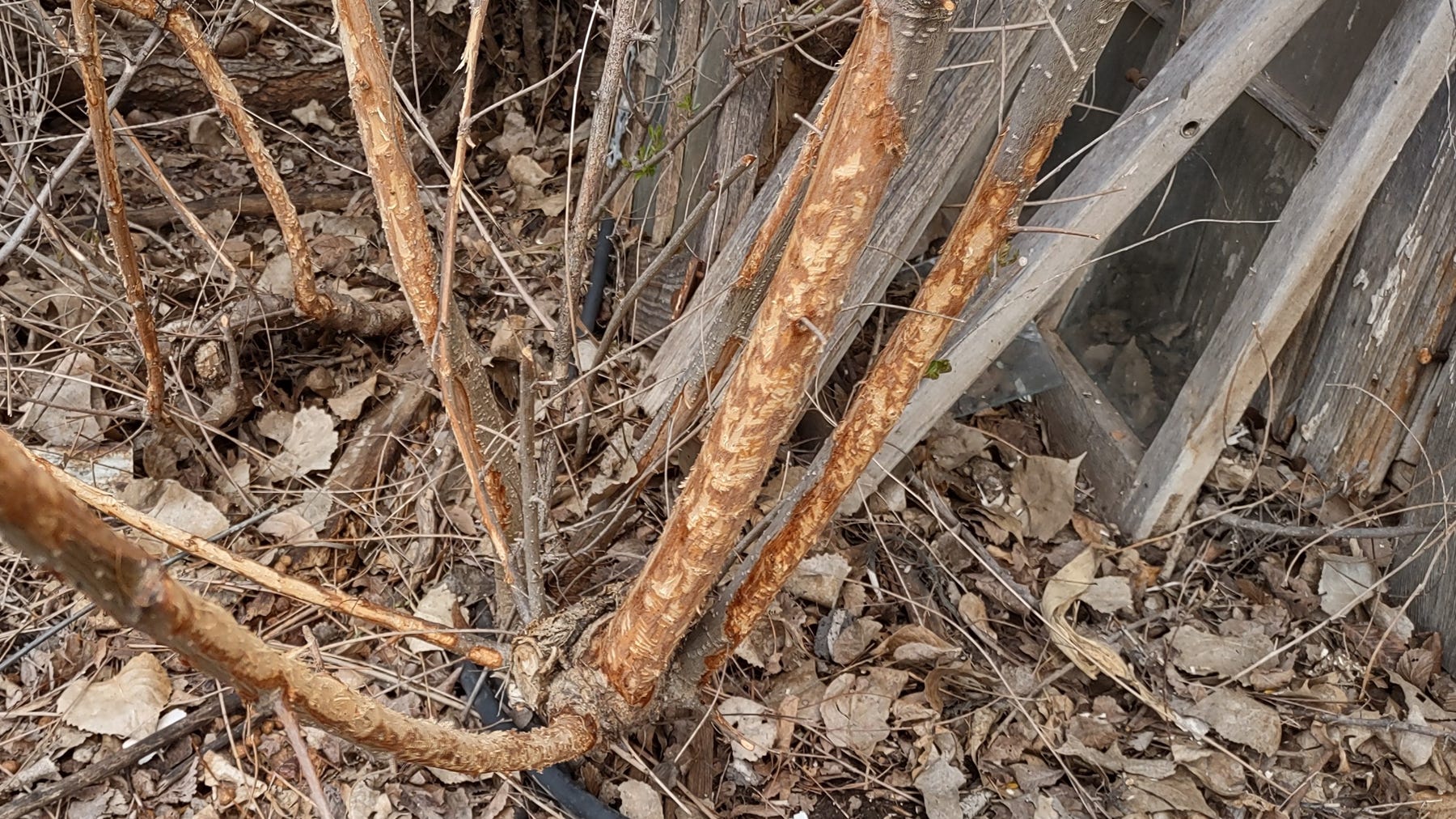
Winter can be tough on trees, especially young and newly planted trees. A couple of the more damaging winter prospects for these trees include sunscald and rodent or critter damage. But both of these winter threats can be solved with similar protective shelters or tree wraps.
Sunscald, which is often called “southwest injury,” because it generally occurs on the southwest side or sunny side of the tree in the winter, happens on cold but sunny winter days when the sun can heat up cells in the cambium or living tissue in the tree, causing them to move water and nutrients.
Temperatures can be up to 70 degrees F higher in the winter on spots where the sun hits the bark directly, compared to the shaded side of the tree.
Thinly barked, young trees — including cherry, crabapple, redbud, gingko, honey locust, linden, maple, plum and even mulberry — are among the most susceptible. Young transplanted or newly planted potted trees often have their branches pruned up high, so those lower branches aren’t available to naturally shade the trunk.
The sun hits the thin bark during the day, activating tissue, and at night or when clouds shade the sun, temperatures go back down rapidly, killing that active tissue on the trunk.
Not all trees need winter wrap. Older trees, or those with thicker bark, have a natural insulation to keep tissue dormant and cold-hardy, thus preventing sunscald.
Trees affected by sunscald often display a crack or split in the bark tissue. Over time, they generally heal themselves with new growth of the inner bark or along the edges of where the split is visible. However, this wound can be an entrance location for disease and insect pests.
Preventing sunscald can be as easy as wrapping the young tree with a white reflective tree wrap or guard. This should be applied in the fall and needs to be removed in the spring. Never leave the wrap on the tree year-round.
Stay away from dark-colored wraps because they absorb the sun’s rays and increase the heat on the bark surface. As the tree ages, its bark becomes hardened and furrowed, so wrapping is generally not necessary for mature trees.
Rodent and critter damage
Mice, rabbits and voles can all be wintertime pests to trees as they forage for food sources. They generally will eat shrubs down to the ground, and they will girdle trees and shrubs, feeding on twigs, bark, leaves and stems.
The best strategy for reducing critter damage is to reduce areas of habitat around the trees. Cut grass and weeds within 2 feet of young trees to reduce the cover available for mice, voles and rabbits. Discourage rabbits from feeding on young trees by removing adjacent brush piles and fencing off their hiding spots under decks and other buildings.

CRITTER DAMAGE: These twigs have been severely girdled by rabbit feeding. Such feeding can be controlled by reducing habitat around trees and shrubs for critters, along with installing a cylinder of hardware cloth around the tree trunk to keep rodents and rabbits away.
A cylinder of quarter-inch hardware cloth around the tree trunk about 6 inches away from the trunk year-round can keep critters away. To prevent mice from feeding, bury the hardware cloth below the ground line so they can’t dig underneath.
For rabbits, you want to extend the hardware cloth up high — about 18-24 inches above the anticipated snow line, making sure there are no gaps between the bottom of the mesh and the ground where the animals can crawl under any fencing or barrier. For smaller trees, plastic tree guards or shelters will work. There are also spray or paint repellents available that taste or smell bad to animals.
Learn more at extension.umn.edu.
About the Author(s)
You May Also Like






